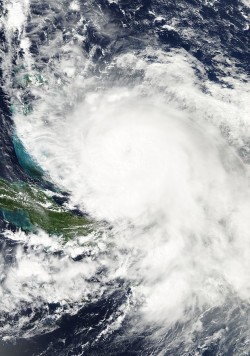
Rescue forces continue to search for the victims across massive debris fields. According to a report on U.S.A. Today, crews have been searching over 70,000 nautical miles since the ship was reported missing.
Even as searches continue, many questions remain. For instance, why did the ship sail into the deadly storm? According to CNN, the company that owned El Faro reported that the ship lost power during the storm, making it impossible for the crew to avoid the worst of the winds. Yet, the maritime accident lawyers at our firm and other experts have questioned why the ship was on the water at all. Some have argued that the ship was too old to be seaworthy.
At the end of the day, it is a captain’s ultimate decision about which course to chart. Captains generally keep a safe distance away from storms based on the National Hurricane forecasts. The higher the winds and the larger radius a storm takes up, the further away captains of ships will stay. As it stands, it isn’t clear whether the captain of the El Faro followed standard guidelines for navigating around a hurricane.
There are a variety of factors that could have contributed to the captain’s decision. El Faro was a shipping vessel, and pressure to deliver goods on time may have been a factor in the captain’s decision to maintain the vessel’s course. Deadlines for delivery may have also factored into the captain’s choice to press on, despite storm warnings.
Based on certain analyses, the captain would have been able to stay ahead of the storm, provided that all equipment maintained in working order. Depending on the size and sturdiness of a vessel, a cargo ship may be able to surpass waves generated during a hurricane if it can avoid getting hit by waves sideways. However, reports suggest that El Faro lost propulsion.
Yet, given the uncertainty of storm prediction, the disappearance of El Faro raises some serious questions about commercial shipping – and cruising – during hurricane season.
El Faro was an older vessel, which may have contributed to its propulsion failure. However, does this mean that older cargo and cruise ships are also at risk of stalling on the high seas? It’s certainly a possibility. But it all depends on how the safety measures taken by the shipping or cruise company.
Failing to update equipment on older vessels and neglecting to perform routine maintenance checks can lead to serious accidents while on the high seas. At this point, we don’t know whether safety negligence was a factor in the malfunction El Faro experienced, or even if the vessel would have withstood the hurricane’s force had it still be operating properly.
In normal weather conditions, if a ship experiences minor mechanical failure, the lives of those on board aren’t necessarily threatened. The ship can either be repaired or those on board can be moved to another vessel. Yet, during hurricane season, a stalled vessel can become extremely vulnerable to an impending storm’s force.
If it turns out that the owner of El Faro did not properly maintain the vessel in safe condition, ultimately contributing to the propulsion problem and tragic accident, then any survivors or the loved ones of those who may have perished may be entitled to compensation under the Jones Act and should consider speaking with a maritime accident lawyer to discuss their rights and options in filing a claim.




